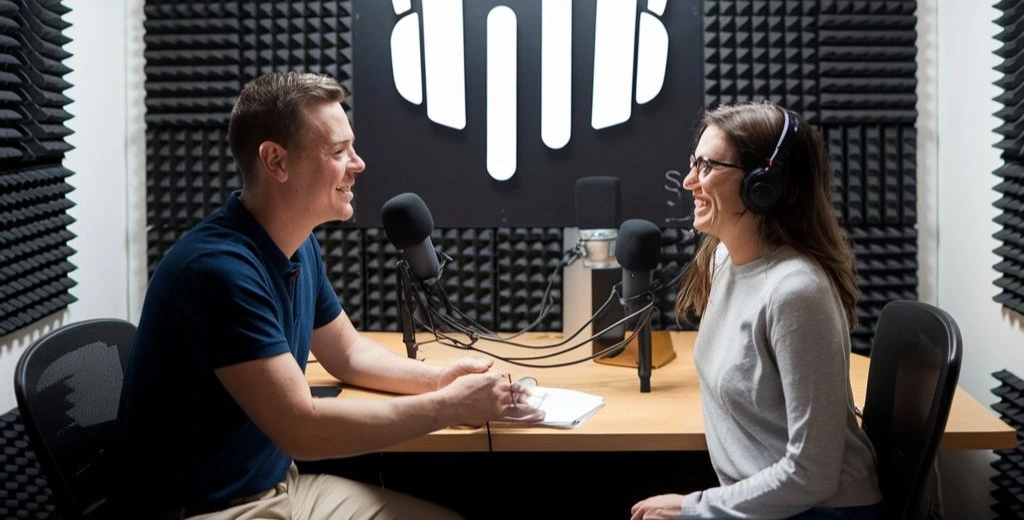Why Audio Ads Are Here to Stay: The Power of Sound in Marketing

Introduction: The Enduring Relevance of Audio Advertising
While ads change on a daily basis, it has been predicted that audio ads would collapse. Individuals have become accustomed to the phenomenon of pre-roll video ads on popular platforms such as TikTok and YouTube, in addition to Instagram video story ads. The recurrent question is—who in their right mind prefers listening to an advertisement over watching it? Not so fast.
In the realm of marketing, the ones you hear on the radio, Spotify, or your favorite podcast, remain a powerful force. They harness the power of sound to capture your attention and stay with you rather than relying on dazzling visuals. As a digital marketing specialist in Malappuram, let’s examine why audio advertising is not just surviving but flourishing and won’t be disappearing anytime soon.
The sound effect on psychological memory
Ever hear a tune such as “Happy Birthday” or a McDonald’s jingle and catch yourself whistling it hours down the line? That’s sound magic, and sound ads understand how to apply it. A jingly tune, a cheerful voice, or even a witty sound bite, such as the snap of chips in a snack advertisement, can plant itself in your brain without your even realizing it. Take the old “I’m lovin’ it” McDonald’s ditties, for instance: basic, yet chances are you still have the song stuck in your head. As opposed to a video you may swipe past, sound creeps in and lingers, so it’s a subtle but powerful method for brands to get you thinking about them.
Availability Throughout Daily Tasks
Imagine your day: perhaps you’re commuting to school with the radio on, running with earbuds in, or cooking dinner as a playlist runs in the background. At those times, you’re not stuck to a phone or television screen, video ads can’t find you. Audio ads, however, just slip into those spaces. They’ll strike you with a speedy “New game alert, download now! ” when you’re on the go or too occupied to glance down. This capability to ride along with your day-to-day hustle is massive. Radio still reaches millions of people weekly, and podcasts are growing fast, over 100 million Americans listen monthly. Audio commercials don’t require your eyes; they simply require your ears, and that keeps them competitive.
The Power of Authenticity in Engaging Listeners
There’s something unique about listening to an ad from a voice you already trust. Consider podcasts, for example. If you’re listening to a show about gaming, sports, or even creepy mysteries, and the host stops to say, “Hey, I’ve been using this app to monitor my workouts—it’s great,” it doesn’t sound like a normal ad. It sounds like a friend tipping you off. That personal vibe is a big deal—listeners don’t skip those ads nearly as much as they do video ones. Compare that to YouTube, where you’re counting down the seconds to hit “Skip Ad.” With audio, especially in podcasts, it’s less in-your-face and more relatable, which is why brands love it and why it works so well.
Economic Advantages and Production Simplicity
Let’s talk about practical stuff. Putting an ad in video form is the whole production, a camera, a light or two, some editing software, possibly even actors. It’s not cheap, and it takes effort. Audio ads? Much easier. Just need a good microphone, a script, and possibly some music for background. Done. That’s why they are so popular for smaller companies—such as the local skateboard store or a business selling hip devices—who do not have thousands of dollars to drop on some over-the-top video production. You can record an audio spot the length of a car ad at 30 seconds in a single day, and it won’t break the bank. Large brands have them in use as well, but all that low friction gets audio advertisements open to any entity, helping keep the mode on life.
Built for Tomorrow’s Tech Tech
Audio adverts are not playing second fiddle to the nostalgia parade, but prepping themselves for tomorrow instead. Smart speakers like Amazon’s Alexa or Google Home are popping up in more homes every year, and audio ads are jumping on board. Imagine this: you’re listening to your favorite playlist on Spotify, and a voice breaks in with, “Want
a free sample of this energy drink? Just say ‘yes’ to order! ” That’s not sci-fi, it’s happening now, and it’s only going to grow. Voice-activated commercials are next, merging into our existence via devices we already have. And with streaming services like Spotify having more than 600 million users globally, the market for audio commercials is enormous and growing.
Conclusion: The Sustained Influence of Audio Advertising Audio ads may not blind you with pictures or command your undivided attention like a video, but that’s precisely why they succeed. They engage through sound to reach you in a personal, functional, and lasting way, inserting themselves into moments when other ads can’t. They’re cheap enough for anyone to experiment with, and they’re already evolving to the technology of tomorrow. So the next time you’re listening to music or a podcast and an ad comes on perhaps for a new phone or a snack you didn’t realize you needed, don’t tune it out. It’s evidence that audio advertising has a voice, and it’s not going away anytime soon.